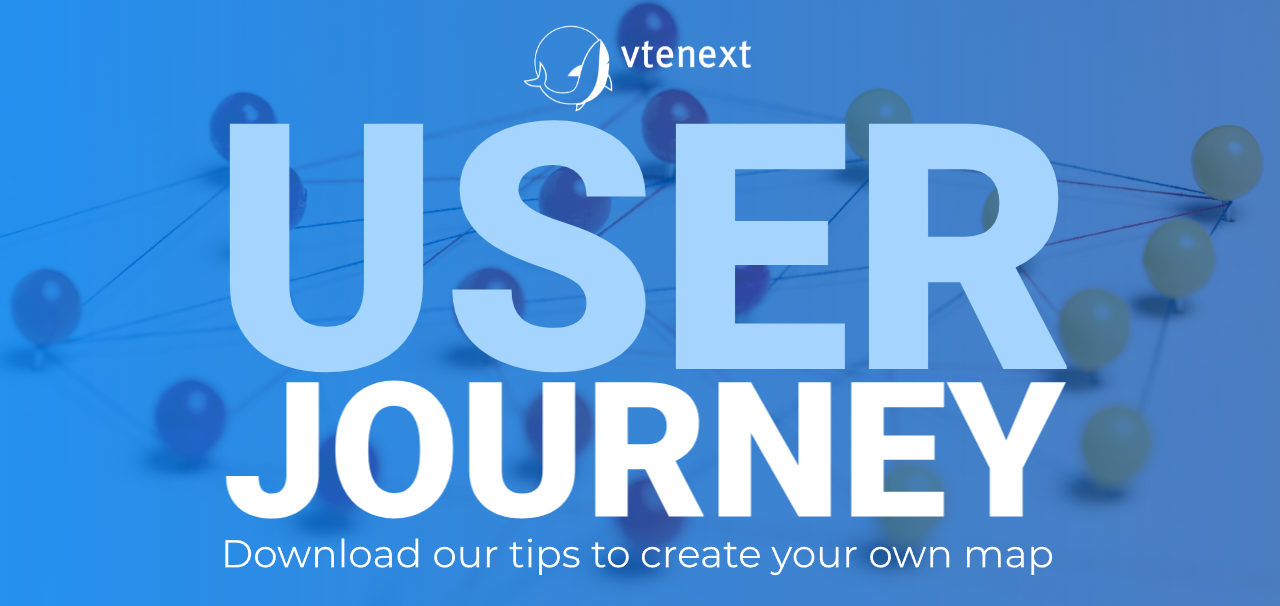Putting the user at the center of your marketing strategy is crucial, and the User Journey has become an essential concept. This approach allows us to track the path that customers follow to discover our product. By analysing all the stages of this process in detail, it is possible to elaborate a more effective communication strategy and achieve better results.
What is the User Journey
The User Journey is fundamental to understand the overall experience of a user while they interact with a product or service and this concept helps us see how the user moves through different channels and touchpoints over time, creating a map of the experience.
The experience of a customer who wants to buy a new car can be taken as an example: the search often starts online, where the customer visits various websites to compare models, prices and reviews; subsequently, they could visit some dealers to see the cars up close and do some test drives. During this process, there are many interactions: the user receives promotional emails, participates in live chat on the site of the dealer, and finally signs a contract at the sales office.
To fully understand this complex journey, it is important to place these events in context, taking into account the emotions and motivations of the user. This approach not only helps to identify bottlenecks or obstacles, but also allows to optimize the user experience as a whole.
The user’s journey maps are narrative tools that describe this path in detail: they do not just list actions taken to achieve a goal; rather, they tell a story from the user’s point of view, based on its interactions and perceptions.
To create these maps effectively, it is useful to adopt contextual research methods that bring to light long-term user goals and behaviors and these methods can be integrated with user interviews to find out needs directly. Through this process, you gain a deeper understanding of user journey, which allows you to improve and personalize the experiences you offer.
How to create a User Journey Map
Creating a User Journey Map requires attention to avoid complicating the process too much. Even when you have different types of users in mind, it is advisable to focus on one person and on a single scenario at a time. This approach allows you to keep a clear focus, obtaining precise and functional maps. By focusing on one route at a time, it is possible to gather detailed and meaningful information that can really make a difference: concrete help can come from tools such as those provided by VTENEXT. In this case, it is advisable to also discover other approaches, such as sales enablement.
Stages of the journey
To create a really useful User Journey Map, it is necessary to follow some key steps. Let’s start with the definition of user personas: these are realistic profiles that represent customers and allow you to better understand their needs and expectations. It is useful to start with the ideal customer base profile and then work out different ones to fully understand who your buyers are. This also helps to familiarize anyone involved in the process with users who cross the path.
Once you have defined people, you have to understand the users’ goals. Ask yourself: what do they want to achieve by using your products or services? If you don’t have the answer, it’s time to focus on this aspect. During the mapping of the route, creating tasks that bring out users’ goals and put them in logical order can make everything clearer; each stage of the path can have more goals, and ranking them by difficulty helps to find out frustrations or positive surprises that users encounter.
The next step is about touchpoints: these are the moments when the customer interacts with the brand, both online and offline. It is essential to recognize which of these points are more significant: for example, an unusable cart could ruin the purchase. Keeping track of all these moments helps to keep customer satisfaction high.
Then, critical and frustrating moments must be identified. Here you have to investigate what is not working, perhaps through interviews or surveys: finding out where customers abandon a purchase or identify areas for improvement is essential. Once you understand the problems, you set priorities to solve them. A few small changes may be enough instead of revolutionizing everything.
It is necessary to remember that the User Journey Map must evolve: users change, and so have to do the maps that must be updated regularly and making sure that they always remain useful in case of important changes in the product.
How to optimize the user journey
To optimize the user path, you need to follow some fundamental steps, starting from the analysis of the situation and context. First of all, it’s useful to observe how customers interact with the brand, by identifying the steps they usually take. This process helps to discover patterns and to understand where the efficiency of interactions can be improved.
As explained above, a key element is having a clear profile of the ideal customer: creating detailed buyer personas, based on real data and market research, offers a clear view of the needs and preferences of users. When defining these profiles, it is useful to ask which customers are more loyal, who recommends the brand to others and which ones have a greater value over time. This information helps to identify the most important customers and better understand how to reach them.
Customer segmentation is another important step to be taken before mapping the user path, grouping users according to demographics, behaviour, buying patterns and psychological interests, in order to better personalise marketing strategies for each group.
The mapping of the user journey implies the identification of key interactions and the analysis of how they occur across various touchpoints, such as websites, apps, social media and more. It’s important to understand each stage of the customer lifecycle, identify touchpoints and establish metrics to assess success.
Customer feedback is essential to understand their experience and identify areas for improvement, and collecting it through surveys, social media monitoring, interviews and online reviews provides valuable insights into customer perceptions.
Finally, the causes of problems must be identified and addressed so that the customer experience can be continuously improved: using A/B tests and other analytical tools helps to make decisions based on evidence, ensuring that the changes bring real added value to the user path.
User Journey vs User Flow
Very often the concept of User Journey is associated with that of User Flow. The two approaches have some points of contact, but also some differences.
Both focus on the user, putting them at the center of their analysis, using research and study of the user’s behavior, preferences and needs to guide design and optimization decisions.
In this way user steps and interactions with a product or service are tracked, helping to identify critical points and opportunities for improvement along the way. These tools provide valuable insights to improve the overall user experience and optimize conversion rates.
Moving on to the differences, User Flow is typically used during product development and design, focusing on operational details and technical steps that the user must take to achieve a specific goal. It is more focused and detailed, ideal for those involved in specific interactions with the system.
On the other hand, the User Journey adopts a broader and more strategic view of user interaction, exploring the entire customer journey from start to finish. It highlights emotions and brand perceptions, providing a more complete picture of how the user interacts with the company across various touchpoints and channels. It is a more complex tool, often represented through storytelling and mapping that tell the whole experience.
Finally, in the structure, User Flows are often represented with clear and linear diagrams or flowcharts, while User Journeys tend to be more intricate, showing the complexity and depth of user experiences through detailed mappings.
Understanding the user journey is critical to driving the user experience; with the help of tools like the vtenext CRM it is possible to analyze data to create a winning strategy.

